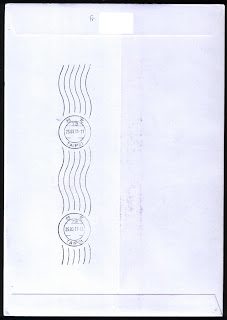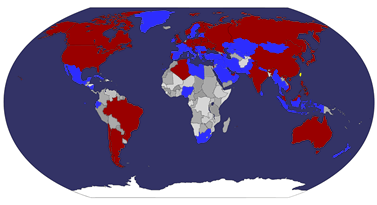Anime - One Piece
One Piece (ワンピース Wan Pīsu) is a Japanese shōnen manga series written and illustrated by Eiichiro Oda, that has been serialized in Weekly Shōnen Jump since August 4, 1997. The individual chapters are being published in tankōbon volumes by Shueisha, with the first released on December 24, 1997, and the 61st volume released as of February 2011. In 2010, Shueisha announced that they sold over 200 million volumes of One Piece manga so far; volume 61 set a new record for the highest initial print run of any book in Japan in history with 3.8 million copies (the previous record belonging to volume 60 with 3.4 million copies). Volume 60 is the first book to sell over two million copies in its opening week on Japan's Oricon book rankings. One Piece follows the adventures of Monkey D. Luffy, a 17-year-old boy who gains elastic abilities after inadvertently eating the gum gum fruit, one of the mystical devil fruits, and his diverse crew of pirates, named the Straw Hats. Luffy explores the ocean in search of the world's ultimate treasure known as the One Piece and to become the next Pirate King. On his journey, Luffy battles a wide variety of villains and makes several friends.
The series has been adapted into an original video animation (OVA) produced by Production I.G in 1998, and an anime series produced by Toei Animation, which premiered in Japan in 1999. Since then, the still ongoing series has aired more than four hundred episodes. Additionally, Toei has developed ten animated feature films, an OVA, and five television specials. Several companies have developed various types of merchandising such as a trading card game, and a large number of video games.
The manga series was licensed for an English language release in North America by Viz Media, in the United Kingdom by Gollancz Manga, and in Australia and New Zealand by Madman Entertainment. The anime series was licensed by Funimation Entertainment for an English language release worldwide, although the series has been dubbed previously by 4Kids Entertainment.
Since its release, One Piece has become one of the most popular manga series of all time in both Japan and North America and is the highest-selling manga in the whole history of Weekly Shōnen Jump in Japan. It enjoys a high readership, with more than 202 million volumes of the series sold by 2011. Reviewers have praised the art, characterization, and humor of the story.
One Piece (ワンピース, Wanpīsu) est un manga, qui est ensuite adapté en anime et en jeux video, de type shōnen créé par Eiichirō Oda.
One Piece se focalise sur les aventures d'une bande de pirates menée par le capitaine Monkey D. Luffy dont le rêve est d'obtenir le One Piece – un fabuleux trésor qui appartenait au défunt seigneur pirate Gol D. Roger (ou Gold Roger) – afin de devenir à son tour le seigneur des pirates.
Le manga est toujours en cours de publication au Japon. Les chapitres sont prépubliés dans le magazine Weekly Shōnen Jump et regroupés en tomes aux éditions Shūeisha depuis 1997. La série télévisée va bientôt avoisiner les 500 épisodes. Le manga, est publié en France par Glénat, et la série est actuellement diffusée en France sur Direct Star et MCM.
Kana Home Video a acquis une licence pour éditer les 325 premiers épisodes de l'anime en français.









































 taiwan
taiwan  cover or postcard
cover or postcard  FDC
FDC 





























































































